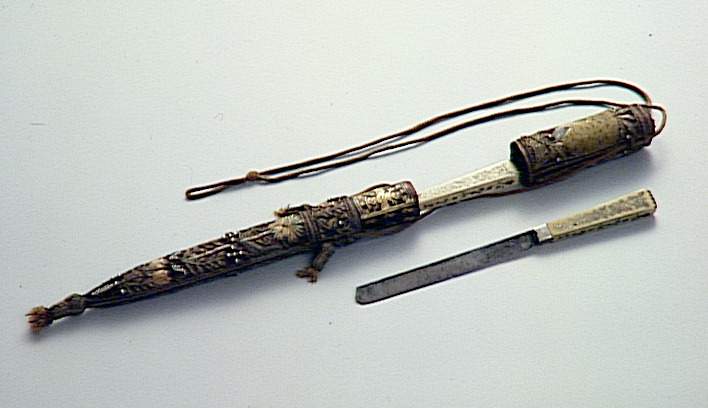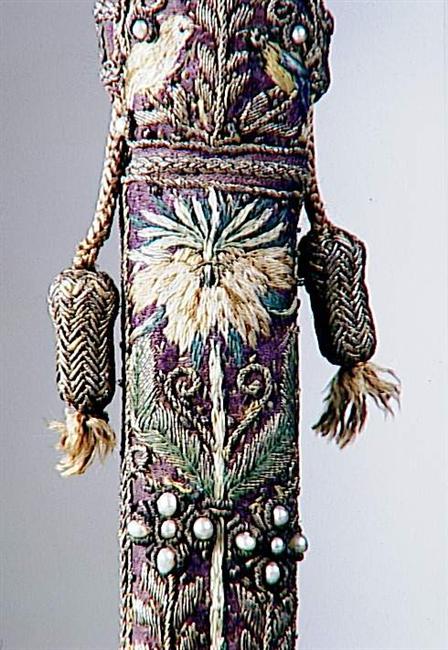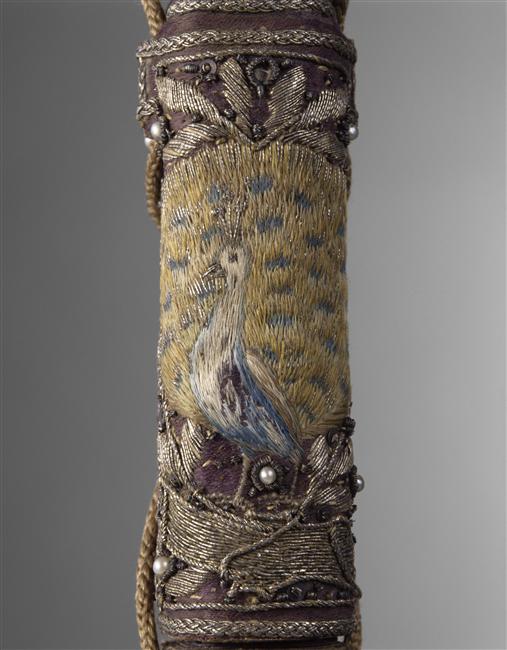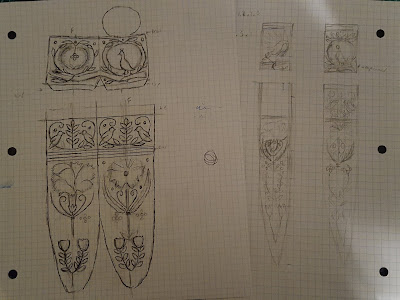In this picture to the right you can see that I chose the colors for the flowers to match the original piece without taking into account that the background purple is very different. I'll be making some adjustments when I move onto the shading. But in person these lines show up plenty to give me guidance.
Here you can see the back of the piece and how I tacked the linen with the pattern on it to the back of the silk. There's actually another piece of linen in between, because the linen was so thin. You can also see that in the end I changed the pattern at the point of the sheath. I was having a hard time fitting all the motifs, so I dropped the tulips from the design. I'll need to decide on something small to put there later.
Once everything was outlined it was time to start my favorite kind of embroidery - silk shading! I used a few different similarly sized silks (primarily Splendor, though) because that's what I had in the colors I needed. I closely followed the original coloring, but I think either the threads I'm using are slightly finer, or the images are larger. It's difficult to know scale from the pictures that are available, unfortunately.

Here the left flower (minus stem) and laurel leaves are finished, and the peacock is well on his way.
I was originally going to put more shading into the laurel leaves, but people seem to like them a lot as is, so I've decided not to mess with success in this instance.
Next I'll be finishing the peacock and the right flower, before moving on to birds and stems.











